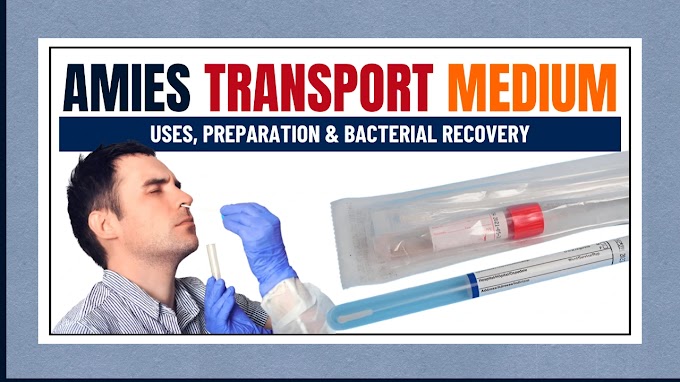Table of Contents
- Wheatley Trichrome Staining definition
- Principle of the Wheatley Trichrome Stain
- Preparation of Reagents
- Procedure for Wheatley Trichrome Staining
- Stool preparation
- Staining the smears
- Results and Interpretation of Wheatley Trichrome Stain
- Limitations of Wheatley Trichrome Stain
- Applications of Wheatley Trichrome Stain
Wheatley Trichrome Staining definition
In parasitology, the Wheatley Trichrome staining technique is used to detect and identify intestinal protozoans in faeces samples. It uses a specific permanent coating.
- On a stool sample that has been PVA-fixed or preserved with Schaudinn's, trichrome staining is applied.
- Cysts and trophozoites are the two recognised protozoan morphologies.
- This stain was created by Gomori in 1951, and Wheatley later improved it in 1952 by adding fixative and hydration phases to the original approach to provide a quick and easy staining method for intestinal amoeba and flagellates.
Principle of the Wheatley Trichrome Stain
The method makes use of permanently smeared faeces or faecal film samples to aid in the detection and identification of cysts and trophozoites. Because of its high sensitivity, it can find tiny protozoans that were overlooked by our mount inspection. A modified version of Gomori's original method for staining tissues is the Wheatley Trichome satin. The approach has a straightforward process that is finished quickly. It creates smears of human cells, yeast, artefacts, and intestinal protozoans that are consistently coloured. The stools utilised for testing are either fresh, fixed in polyvinyl alcohol (PVA), or preserved in sodium acetate-acetic acid-formalin (SAF).
Preparation of Reagents
- Trichrome (Wheatley’s formulation)
- Chromotrope 2R…………………. 0.6 g
- Light green SF…………………… 0.3 g
- Phosphotungstic acid…………… 0.7 g
- Acetic acid (glacial)……………… 1.0 ml
- Distilled water……………………. 100.0 ml
- The dry ingredients should be mixed with 1.0 cc of acetic acid and allowed to ripen for 3 minutes at room temperature. When 100ml of distilled water is added, the solution's colour turns purple. The solution should be kept at room temperature and shielded from light in a glass or plastic bottle. The solution has a 24-month shelf life.
- Iodine crystals added to 70% alcohol to create a dark solution (1-2g/100ml), which is needed to create a stock solution. To use, liquefy the stock in 70% alcohol until it has a deep reddish-brown hue or a strong tea hue.
- 70% Ethanol
- 90% Acid Ethanol: Prepared by mixing 99.5 ml of ethanol with 0.5 ml of glacial acetic acid.
- 95% ethanol
- 100% ethanol
- Xylene or xylene substitute
- Mounting medium (Permount)
- Immersion oil
Procedure for Wheatley Trichrome Staining
Note: Put on hand gloves when performing the Wheatley Trichrome Stain.
Stool preparation
- Prepare the fresh stool sample. Using applicator sticks, place little amounts of faeces on clean, sterile microscope slides. smearing the sample in extremely thin layers.
- Don't let the slides dry; instead, dip them right away in Schaudinn's fixative and let them set for 30 minutes. If the stool sample is wet, put 3–4 drops of PVA into the slide that has the stool sample on it before letting it dry for several hours at 35–37°C or overnight at room temperature.
Staining the smears
NOTE: PVA smear preparation is placed in iodine-alcohol (70% ethanol plus iodine) for 10 minutes. For other samples with different fixatives without mercuric chloride, omit the iodine step.
- Remove the slide from the Schaudinn’s fixative and place the slide in 70% ethanol for 5 minutes.
- Place the slide in 70% ethanol plus iodine for I minute for fresh stool samples or 5-10 minutes for PVA-preserved air-dried samples.
- Place the slide in 70% ethanol for 5 minutes.
- Place the slide in 70% ethanol for 3 minutes.
- Place the slide in Trichrome stain for 10 minutes.
- After submerging the slide in 90% ethanol and acetic acid for one to three seconds, drain the rack right away and move on to the next procedure. The slide must not stay in this solution.
- To rinse, submerge the smeared slide in 100% ethanol.
- Slide should be exposed to two changes of 100% ethanol for three minutes each.
- Put it in xylene for five to ten minutes.
- With the aid of a coverslip and a mounting substance like permount, mount the smear.
- Give the smear at least one hour at 37°C or overnight to dry.
- The smear is seen under a 100X microscope. Oil immersion tests are conducted at 200–300 fields.
Results and Interpretation of Wheatley Trichrome Stain
- Look for protozoan cysts and trophozoites.
- The protozoan trophozoites' cytoplasm exhibits blue-green or light purple staining.
- The cysts seem more purple-colored.
- Human cells such Red blood cells, polymorphonuclear cells (PMNs), and macrophages can be detected and stained red to indicate the presence of yeast.
- The inclusion bodies and nuclei also exhibit a crimson stain with a purple hue.
- The green of the backdrop stands in stark contrast to the protozoan life.
- The stain solvents disperse the glycogen molecules, which then become as transparent as the organism itself.
Limitations of Wheatley Trichrome Stain
- The Wheatley Trichrome Stain cannot permanently stain helminth eggs or larvae.
- High magnification is needed to see the stain and some protozoan morphologies may be lost or overlooked when the stain is submerged in oil.
- The Wheatley Trichrome stain cannot be used to identify some protozoans, including Cyclospora cayetanensis and Cryptosporidium parvum.
- Wheatley Trichrome Stained smear cannot detect Microsporidia spores.
Applications of Wheatley Trichrome Stain
- For diagnosis of intestinal protozoa infections.
- For identification of parasitic morphologies.
- For identification of different yeast cells.
- For identification of human cells.







